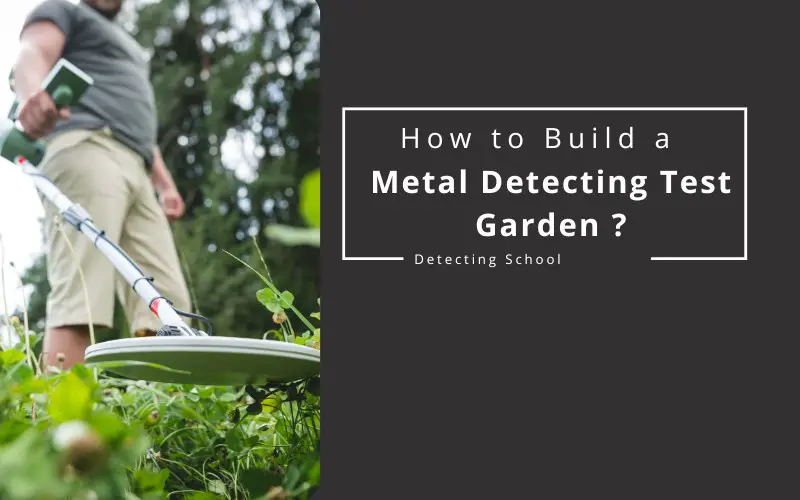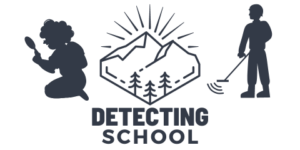
A metal detecting test garden is your secret weapon! It will help you fine-tune your skills and have the right understanding of your machine…
In this simplified guide, I address the steps and benefits of creating your very own test garden the simple way …
Let’s dive in!
Key Takeaways
- A test garden sharpens your ability to detect and recognize different metals before unearthing them.
- You need to have a careful location selection to make sure there are no interference. So, you can mimic real-world terrains.
- You need to develop methods to simulate real-world scenarios in the garden to enhance skill proficiency and challenges detection techniques.
Why should you build a test garden?
Building a test garden for metal detecting comes with a ton of benefits:
- It provides a controlled environment to practice your detection skills.
- You can familiarize yourself with the distinct sounds and signals of each item, by placing various metals and objects at different depths.
- You will notice a significant improvement in the accuracy of real-world treasure hunts.
- Helps for a better calibration and understanding of a metal detector’s features and capabilities, thus a better optimization of its performance.
- Gain the necessary confidence before embarking on actual expeditions.
Quick Tips: If you want to make the most out of your test garden, it is advised to use a multi-purpose metal detector (Check this Example). Indeed, these machines are designed to find all sorts of targets, which will allow you to test many metals and objects in your beloved garden.
How to select the right location?
Selecting the right location for a test garden is critical to make it useful … Try to respect the following guidelines:
- Always, choose a spot free from electrical interferences … These could include power lines or underground utilities. This is important to avoid false signals.
- This is not necessary at the beginning, yet I personally recommend opting for an area with varied soil conditions. This will give you an edge to experience diverse training grounds to understand how different soils affect your detection efforts.
- If you have the possibility to go for flat and slightly sloped terrain it would be even better as it mimics the varied terrains one might encounter while detecting.
- Make sure the terrain is accessible for frequent practice sessions.
- Lastly, the location should have enough space. This will allow you to have multiple burial plots and should be easily modifiable.
How to plan your garden layout?
To plan you garden layout, you need to start by marking designated areas for different metals …
Try to ensure a variety of materials like gold, silver, bronze and even iron (to test your machine discriminating abilities).
To make your practice sessions more systematic, you need to organize these areas in a grid pattern.
- Incorporate sections with 3 different depths (shallow, medium, and deeper burials) to understand detection capabilities of your machine at different ranges.
- You can have areas where targets are clustered together … This will mimic coin spills or hoards and separate sections where items are isolated.
- Try to have a space for larger objects and relics, by doing so you will have a better idea on the differences in signals between larger and smaller objects.
- It is very important to label each section clearly for easy identification (avoid using non-metallic markers).
Detectorists who have accumulated so many finds, they will have an advantage for this step. To expand your knowledge, I invite you to check these things you can do with your metal detecing finds!
Techniques and depth considerations while burying items …
For basic practice, start with shallow burials (2-4 inches) and then you can go deeper for (8-12 inches) to challenge your detection skills.
To make things a little bit more advanced, you can consider burying items even deeper!
Keep in mind that the orientation of items matters; you need to place your targets at different angles as this can help users understand signal variations.
Burying items in proximity to each other will help you to deal with discrimination between adjacent signals.
For coins, consider both vertical and horizontal placements … Keep in mind that this affects the signal strength and clarity.
For relics or larger items, it is very important to try different depths and orientations as well …
Don’t forget to keep marking in permanence the location and depth of each item, ensuring a systematic approach during practice.
From time to time, you can change the depth or replace items!
Always remember that your main goal is to simulate real-world scenarios to enhance skill proficiency!
How to analyze your detector responses and improve its accuracy?
Listen carefully to the audio signals, I would even advice to record those sounds so you can listen to them later …
Keep in mind that each metal produces a distinct tone!
Try to notice the nuances and variations in signal strength based on depth and item size. If you find yourself with situations where you are not sure, dig up the target and cross-check with the expected buried object.
Play with the detector’s sensitivity and discrimination settings and note how they actually influence detection.
It is very important to continuously challenge your detector (& yourself) by re-burying items in more complex arrangements, refining its accuracy.
How to document your test and track your progress?
Maintain a dedicated logbook (You can check this good model) where you can record and journal some helpful details like the object type, its material, burial depth and the detector’s response you got.
I recommend you noting discrepancies between expected and actual signals. I would even advice to track improvements in detection accuracy and speed.
You should review the log to identify areas that need some sorts of improvement. This is the part that many detectorists feel lazy to do.
Tips to simulate real-world detecting scenarios in your garden …
To mimic real-world scenarios, you can follow some of the following tips:
- Bury clusters of coins together in the same hole.
- You can place metals close to junk items to practice discrimination skills.
- Occasionally bury items in oxidized or rusted forms to replicate aged treasures.
- Challenge your machine’s navigation and detection abilities by using natural barriers like rocks or roots.
- Introduce moisture or water to some sections, simulating wet ground conditions.
- From time to time, rotate items in the garden, this will help you to make your tagets unpredictability.
The goal is to create an environment closely resembling actual treasure hunting terrains and challenges.
Final Thoughts …
You should not consider a test garden as just a patch of land; you should rather see it as your personal training ground …
This simplified blueprint to create a test garden is more than enough to get you started and hone your skills and understand your beloved machine better.
Quick Remark: In case you want to parctice in your garden in a bad weather, then you may want to consider weatherproof metal detectors …
